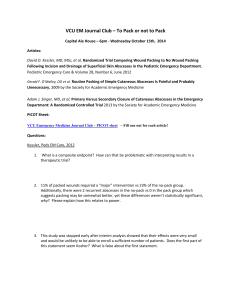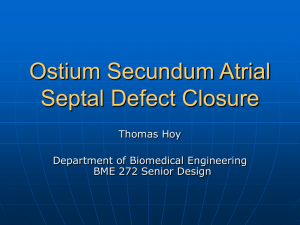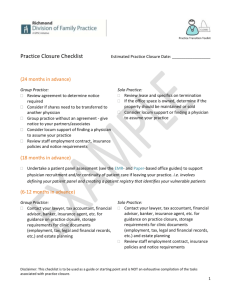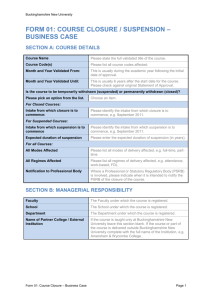first-line therapy for platypnea
advertisement
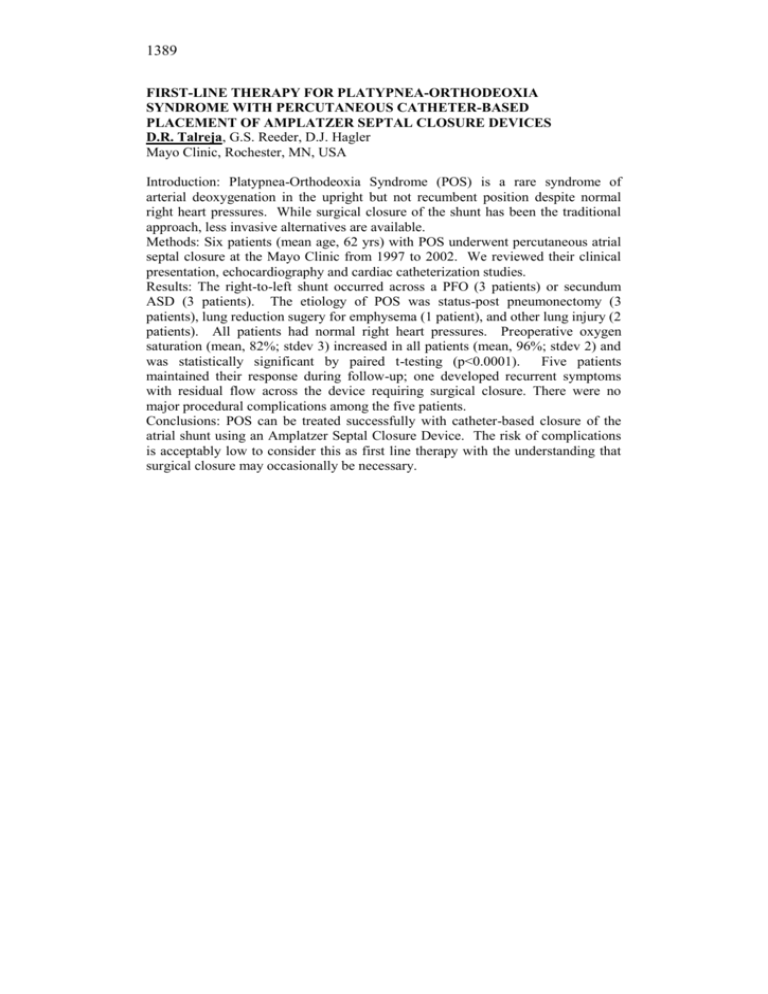
1389 FIRST-LINE THERAPY FOR PLATYPNEA-ORTHODEOXIA SYNDROME WITH PERCUTANEOUS CATHETER-BASED PLACEMENT OF AMPLATZER SEPTAL CLOSURE DEVICES D.R. Talreja, G.S. Reeder, D.J. Hagler Mayo Clinic, Rochester, MN, USA Introduction: Platypnea-Orthodeoxia Syndrome (POS) is a rare syndrome of arterial deoxygenation in the upright but not recumbent position despite normal right heart pressures. While surgical closure of the shunt has been the traditional approach, less invasive alternatives are available. Methods: Six patients (mean age, 62 yrs) with POS underwent percutaneous atrial septal closure at the Mayo Clinic from 1997 to 2002. We reviewed their clinical presentation, echocardiography and cardiac catheterization studies. Results: The right-to-left shunt occurred across a PFO (3 patients) or secundum ASD (3 patients). The etiology of POS was status-post pneumonectomy (3 patients), lung reduction sugery for emphysema (1 patient), and other lung injury (2 patients). All patients had normal right heart pressures. Preoperative oxygen saturation (mean, 82%; stdev 3) increased in all patients (mean, 96%; stdev 2) and was statistically significant by paired t-testing (p<0.0001). Five patients maintained their response during follow-up; one developed recurrent symptoms with residual flow across the device requiring surgical closure. There were no major procedural complications among the five patients. Conclusions: POS can be treated successfully with catheter-based closure of the atrial shunt using an Amplatzer Septal Closure Device. The risk of complications is acceptably low to consider this as first line therapy with the understanding that surgical closure may occasionally be necessary.

